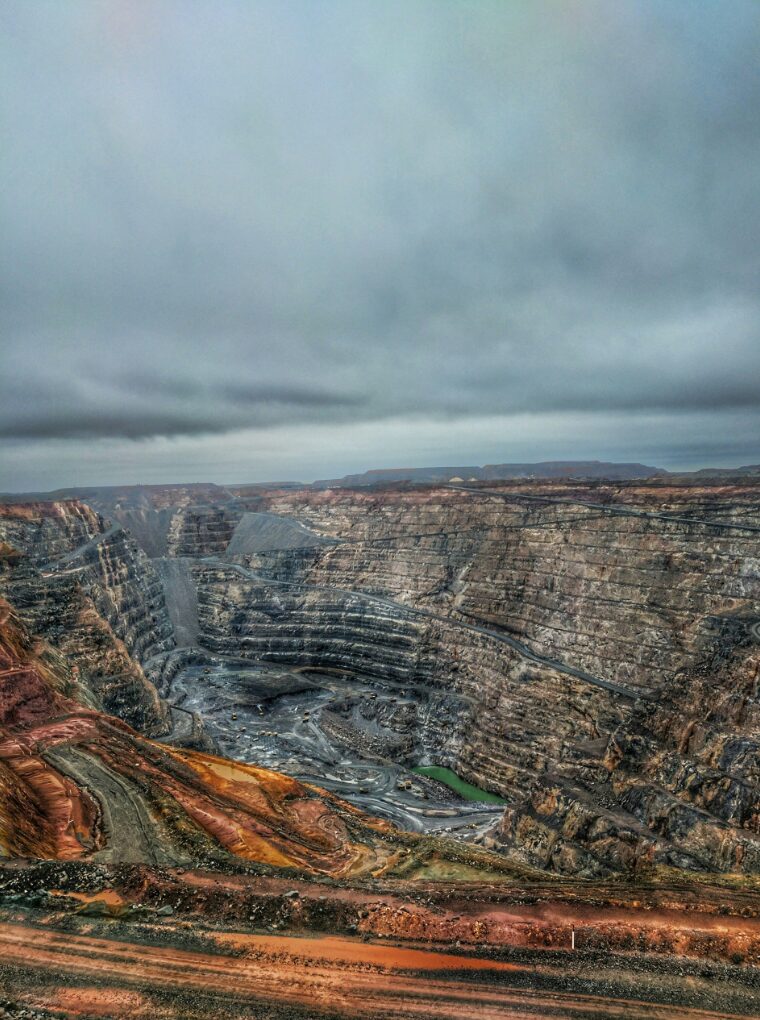
Balancing Environmental Protection with Economic Development: The Greenland Mining Dilemma
By Suhana Roy
“The principle of sustainable development is a principle of international law that reconciles the right to development with the need to protect the environment.”- Christopher Weeramantry, former Vice President of the International Court of Justice (ICJ)
Greenland’s recent decision to halt uranium mining over environmental concerns ignites a significant legal dispute, underscoring the intricate balance between environmental protection and economic development. Energy Transition Minerals (ETM) is seeking either the right to exploit the Kvanefjeld site or compensation of up to $11.5 billion, nearly ten times Greenland’s annual budget. This case highlights the fundamental tension between a nation’s sovereign right to regulate environmental matters and the economic interests of corporate investors.
Environmental vs. Economic Interests
The Kvanefjeld project in southern Greenland is known for its large rare-earth and uranium deposits. These resources offer great economic potential, but environmental issues have been front and center. Those fears of toxic waste contaminating drinking water and harming the area’s agriculture, especially sheep farming, underpin opposition to the mining activity.
Greenland has a long and troubled history with mining pollution, with remnants of lead and zinc mines from the 1970s still contaminating the environment. The local ecosystem, vital for Inuit hunter-gatherers who rely on seals, whales, and other marine life, remains at risk. Recognizing these concerns, Greenland’s 2021 elections became widely known as the “mining election,” where the Inuit Ataqatigiit party campaigned against uranium mining. Upon taking power, the government fulfilled its promise by passing legislation banning uranium extraction, effectively halting the Kvanefjeld project. While celebrated as a victory for environmental and public health, this decision led to a legal dispute with Energy Transition Minerals (ETM), which argues that the mining ban constitutes expropriation and is demanding compensation of up to $11.5 billion. This case exemplifies the growing tensions between sovereign environmental regulations and corporate economic interests, a conflict frequently adjudicated in international arbitration tribunals, where damages for similar disputes have reached staggering amounts.
Greenland’s uranium mining ban is part of a worldwide trend of governments choosing environmental sustainability over short-sighted economic incentives. Yet, jurisprudence of environmental law offers structured mechanisms to resolve such trade-offs. One principle of sustainable development as found in Vellore Citizens’ Welfare Forum v. Union of India (1996)is that the costs of economic growth cannot be externalized to the environment. The Greenland government’s decision aligns with this principle, reinforcing that economic interests must be balanced with long-term ecological sustainability.
Legal and Financial Repercussions
ETM’s legal action uses of the investor-state dispute settlement (ISDS) system, which lets corporations sue countries over actions they believe hurt their profits. Originally intended, as the name suggests, to protect investments in politically unstable nations, this mechanism has morphed into a tool for corporations to challenge national policies (including environmental protections) in international arbitration tribunals against sovereign nations. The abortion ban cases are just the most recent in a long string of environmentally-driven lawsuits running in 2000, such as Vattenfall v. Germany, when a Swedish energy company sued Germany over its nuclear phase-out, showing how environmental policies can create massive financial liabilities for states.
Economic costs notwithstanding, the precautionary principle applied in cases like Pfizer Animal Health v. Council of the European Union (2002) undergirds Greenland’s ban on uranium mining. The principle is that uncertainty in scientific evidence does not justify a delay in measures to protect the environment. Greenland’s policy, which is intended to prevent potential environmental disasters indirectly, is a clear example of this principle in practice.
ETM’s lawsuit also reminds us of the old adage that “the polluter pays”. This principle gained prevalence (by and large) in the Indian Council for Enviro-Legal Action v. Union of India (1996) case where industries were held accountable for damages to the environment. Instead of compensating corporations for lost profits, legal frameworks should balance those rights with requirements for corporations to internalize costs associated with environmental degradation and contribute to restoration.
Global Demand for Rare-Earth Minerals
The global shift towards clean energy technologies escalates the demand for rare-earth minerals. Over the past five years, the market for minerals vital to electric vehicles, wind turbines, and solar panels reached $320 billion. Specifically, demand for lithium tripled, cobalt increased by 70%, and nickel increased by 40% from 2017 to 2022.
Greenland’s Kvanefjeld project holds one of the world’s largest undeveloped deposits of rare-earth minerals and uranium, positioning it as a potential key player in the global supply chain for these essential resources. However, the ethical considerations of sourcing these materials must be addressed through rigorous Environmental Impact Assessments (EIA), as required under laws like the National Environmental Policy Act (NEPA) in the United States. Courts in Brazil and India mandate strict environmental reviews before approving industrial projects, ensuring that economic development does not come at the expense of ecological destruction.
Conclusion
Greenland’s predicament highlights the complex interplay between environmental stewardship and economic development. As the world transitions to cleaner energy sources, the demand for rare-earth minerals will continue to rise, intensifying the need for responsible and ethical mining practices. By integrating sustainable development, precautionary action, polluter pays principles, and mandatory EIAs, legal frameworks can ensure that economic opportunities do not come at the expense of environmental integrity and social justice.
As seen in landmark environmental law cases worldwide, governments can and should implement robust policies to mitigate the adverse effects of economic interests while upholding environmental protections. The Greenland mining dispute will serve as a critical test of how nations navigate these conflicts in an era of increasing ecological awareness and economic globalization.

